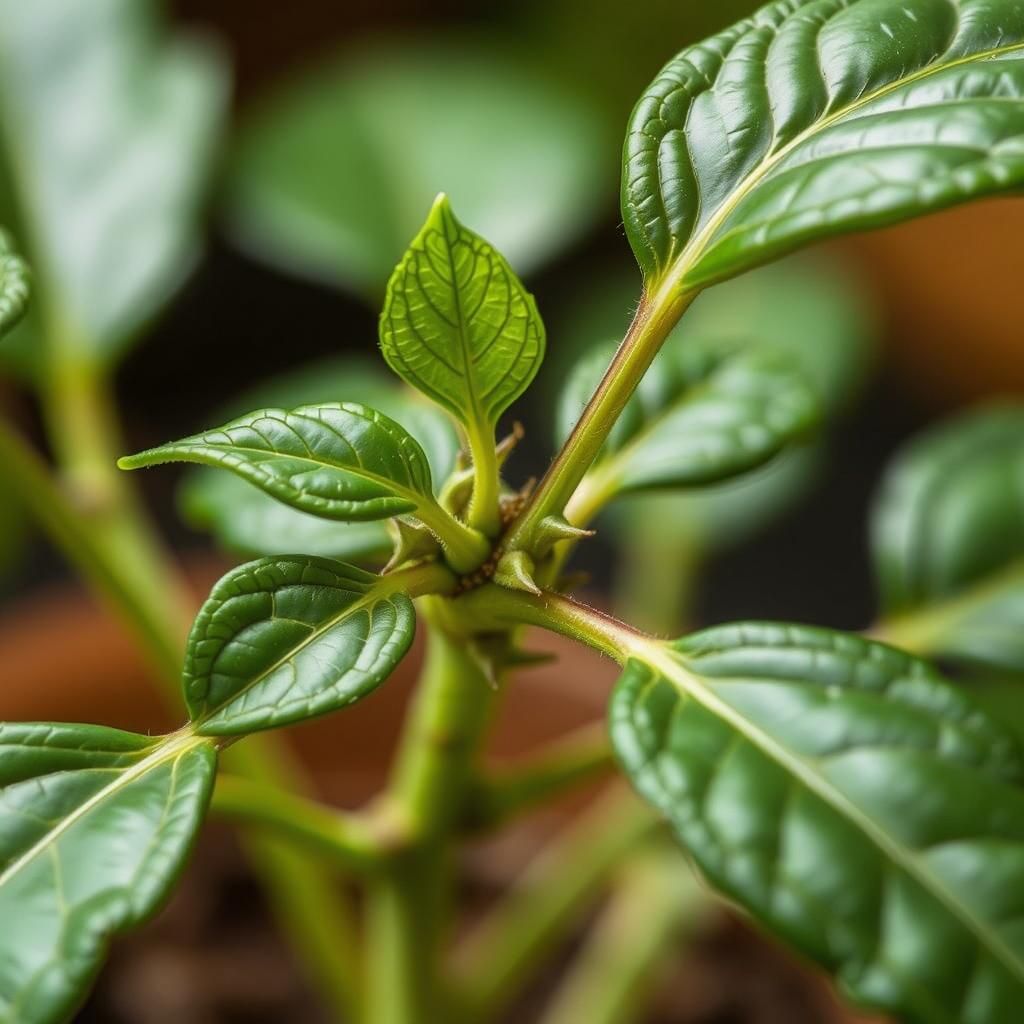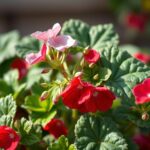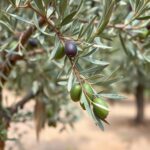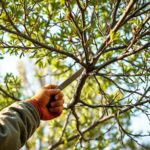Essential Guide: Where to Cut a Node on a Plant? Tips for Successful Plant Propagation

Propagating plants can be a rewarding endeavor, allowing gardeners to expand their green spaces and share plants with friends. One of the key techniques in successful plant propagation is understanding where to cut a node. Nodes are the points on a stem where leaves and buds emerge, making them crucial for new growth. This essential guide will explore the importance of selecting the right node for propagation, offer practical tips for making clean and effective cuts, and provide insights into the ideal conditions for successful rooting. Armed with this knowledge, you can boost your plant propagation efforts and enjoy a thriving garden.
Where to Cut a Node on a Plant?
When it comes to cutting a node on a plant, it's crucial to identify the node properly to ensure healthy growth after the cut. The best place to cut is just above a leaf node, ideally at a 45-degree angle to promote optimal healing and reduce the risk of rot. This method allows the plant to redirect its energy towards the remaining nodes and encourages the development of new branches or leaves. Be sure to use sharp, sterilized scissors or shears to make a clean cut, as this minimizes potential stress and damage to the plant.
Understanding Plant Nodes
Nodes are essential parts of a plant where leaves, branches, or buds emerge. They play a vital role in the plant's structure and overall health. By understanding where the nodes are located—typically, they appear as bumps along the stem—you can make informed decisions about where to cut a plant for propagation or pruning. A clear understanding of nodes can help in effectively guiding the plant's growth after cutting.
Best Practices for Cutting
When cutting a node, following best practices can significantly affect the plant's recovery. Always use clean, sharp tools to prevent introducing diseases to the cut area. The cut should be made at an angle to allow water to run off easily and to increase the surface area for potential roots to develop if you plan to propagate the cutting. Additionally, consider doing this during the plant's active growth period for the best chance of rooting and new growth.
Timing Your Cuts
Timing is crucial when cutting a node on a plant. The ideal time to prune is during early spring or late summer when the plant is actively growing. This allows the plant to recover more quickly from the cut. If you cut during the dormant season, the plant may take longer to heal and could struggle to sustain itself. Understanding your specific plant species is also crucial, as different plants have different growth cycles and may respond better to cuts at varying times of the year.
Common Mistakes to Avoid
One of the most common mistakes when cutting a node is cutting too low or too high. Cutting too low can damage the bark and exposes the plant to infections, while cutting too high may not allow enough growth to emerge from the remaining node. Another mistake includes neglecting to sterilize tools, which can introduce harmful bacteria. Additionally, failing to make a clean cut can lead to stress for the plant, so it's essential to pay attention to the technique used.
Aftercare for Cut Nodes
After making a cut, providing proper aftercare is essential for the plant's recovery and growth. Ensure you keep the environment stable by providing appropriate light, humidity, and watering conditions post-cut. Avoid overly wet conditions that could lead to rot around the cut area. It can also be beneficial to use rooting hormone on the cut area if you're propagating, as this encourages faster root development and overall health.
| Aspect | Details |
|---|---|
| Node Location | Look for bumps along the stem where leaves or branches emerge. |
| Cutting Angle | Make cuts at a 45-degree angle to promote healing. |
| Timing | Best done in early spring or late summer during active growth. |
| Tool Hygiene | Always use sterilized, sharp tools to prevent infection. |
| Aftercare | Stable conditions and proper watering are essential post-cut. |
Do I cut above or below a node?

When propagating plants through cuttings, the decision to cut above or below a node is crucial for the growth of roots and leaves. It is generally recommended to cut below a node. The primary reason behind this recommendation is that nodes contain the necessary meristematic tissue that promotes root formation. Here’s a deeper look into why this is the case:
Understanding Nodes
Nodes are points on a plant stem where leaves and buds originate. They are critical for the growth and development of the plant. The following are essential aspects of nodes:
- Meristematic Tissue: Nodes contain special cells that can differentiate into various types of tissues.
- Root Development: Cutting below a node allows for effective root development because of the presence of dormant roots located at these sites.
- Growth Potential: Nodes ensure that the cutting has the potential to grow into a new plant.
Why Cut Below the Node?
Cutting below the node is vital for several reasons, which include:
- Encourages Rooting: The cut induces stress that triggers rooting hormones to activate, facilitating root development.
- Higher Success Rate: Cuttings taken below nodes often have a higher chance of taking root compared to those cut above.
- Utilizes Node Resources: The nutrients and energy stored in the node help support new growth when roots develop.
Consequences of Cutting Above the Node
Cutting above the node can lead to several issues, including:
- Limited Root Formation: The plant might struggle to develop roots since the cut does not stimulate the node's meristematic tissue effectively.
- Increased Stress: Above-node cuts can lead to greater stress on the cutting, possibly leading to failure in propagation.
- Reduced Growth Potential: Without a functional node below, the cutting may not produce new shoots or leaves.
Best Practices for Cutting Plant Cuttings
To ensure the success of your cuttings, adhere to these best practices:
See also:
- Use Clean Tools: Always use sterilized scissors or shears to prevent disease transmission.
- Select Healthy Stems: Choose strong, healthy stems that are free from pests and diseases.
- Placement in Moist Environment: Place cuttings in a humid environment to discourage wilting and promote root growth.
Examples of Plants to Propagate
Certain plants are particularly suitable for propagation. Here are a few examples:
- Succulents: These can readily be propagated through leaf or stem cuttings.
- Herbs: Plants like basil and mint respond well to cuttings taken just below a node.
- Houseplants: Pothos and spider plants thrive when propagated from stem cuttings taken below a node.
Do you trim a plant above or below the node?

Trimming a plant is a crucial aspect of gardening and plant care, especially when considering the best point to make a cut. When deciding whether to trim a plant above or below the node, it’s essential to understand the physiological impact of these choices on the plant.
When you trim a plant, it is typically recommended to cut above the node. A node is a part of the stem where leaves or branches originate, and it plays a critical role in the plant’s growth. Here are some reasons why you should consider trimming above the node:
1. Promotes New Growth: Cutting above a node encourages the plant to sprout new growth from that node, leading to a healthier and bushier plant.
2. Prevents Damage: Trimming below the node can potentially damage the plant’s growth system and may lead to dieback or stunted growth.
3. Aesthetic Appeal: Making cuts above the node often results in a more visually pleasing shape, allowing for better form and structure in the overall look of the plant.
Understanding Nodes and Internodes
Nodes and internodes are integral components of a plant's structure.
- Nodes: These are points on the stem where leaves emerge and new shoots can develop.
- Internodes: The sections of the stem between the nodes. The length of the internode can affect the plant's height and spacing.
- Growth Potential: Nodes are critical for regrowth; cutting above a node allows the plant to regenerate new branches or leaves efficiently.
Benefits of Cutting Above the Node
Cutting above the node has multiple advantages for plant health and maintenance.
- Encouragement of Lateral Growth: It promotes lateral branching, leading to a fuller appearance.
- Healthier Plants: Reduces stress on the plant, which helps maintain overall health.
- Enhanced Aesthetics: A well-trimmed plant looks more attractive and can enhance the design of your garden.
Identifying the Right Node to Cut
Choosing the correct node to trim is vital for optimal growth.
- Choose Healthy Nodes: Ensure that the node you select is healthy and free from disease.
- Consider Growth Direction: Track the plant's natural growth direction to enhance its form.
- Assess Plant Needs: If the plant is leggy or overgrown, you may want to cut back more aggressively to promote new growth.
Common Mistakes When Trimming
Avoid common errors that can hinder plant health during trimming.
- Cutting Too Low: This can lead to a lack of growth and stress on the plant.
- Using Dull Tools: Dull blades can crush the stem rather than making a clean cut.
- Neglecting Sanitation: Always disinfect tools before use to prevent the spread of disease.
Factors to Consider When Trimming
Several factors should influence your trimming approach and techniques.
- Plant Type: Different plants have varying responses to pruning; research is key.
- Season: Timing is crucial; some plants should only be trimmed during specific growth periods.
- Overall Plant Health: Always assess the overall health of the plant before deciding on trimming strategies.
Do you cut flowers above or below the node?

When cutting flowers, the best practice is to cut above the node. This is because cutting above the node promotes better growth and health for the plant. Nodes are the points on a stem where leaves or buds emerge. By cutting above the node, you ensure that the plant retains the potential for new growth and flowering. If you cut below the node, you may inhibit the plant's ability to regenerate effectively.
Importance of Cutting Above the Node
Cutting flowers above the node is crucial for several reasons:
See also:
- Encourages New Growth: Cutting above the node stimulates new growth from the remaining part of the stem.
- Minimizes Damage: It reduces the risk of damaging the plant's vascular system, maintaining its overall health.
- Aesthetic Appeal: Proper cuts above the node lead to a neater appearance and encourage a more robust flowering pattern.
How to Identify a Node
Identifying a node is essential for proper pruning. Nodes are the spots where leaves are attached or where buds are formed.
- Leaf Attachment: Look for the points on the stem where leaves grow; these are typically nodes.
- Buds: Nodes may also contain buds, which can develop into new growth once pruned correctly.
- Stem Texture: Nodes can often be larger or have a different texture compared to the rest of the stem.
Best Tools for Cutting Flowers
Using appropriate tools ensures clean cuts and minimizes injury to the plant.
- Sharp Pruners: Always use clean and sharp pruners to make precise cuts.
- Scissors: For smaller stems, sharp scissors can be effective and easier to handle.
- Cutting Shears: Specialized cutting shears are ideal for thicker stems to ensure a clean cut.
Timing for Cutting Flowers
The timing of your cuts can significantly impact the plant's health.
- Morning Cuts: Cutting flowers in the early morning when water content is highest helps reduce stress on the plant.
- Before Budding: Prune flowers before they fully bloom to ensure sustainable growth.
- Regular Maintenance: Regular cuts during the growing season encourage more prolific blooming.
Effects of Cutting Below the Node
Cutting below the node can have negative consequences for plants.
- Stunted Growth: Cutting below the node can hinder the plant's ability to produce new growth, leading to stunted development.
- Increased Risk of Disease: Open wounds below the node may expose the plant to pathogens.
- Reduced Flower Production: Failing to cut properly can result in fewer blooms and an unkempt appearance.
Where to cut flowers node?

When it comes to cut flowers, understanding where to cut the flower node is essential for maintaining the health of the plant and encouraging further growth. The flower node, also known as a node, is the point on a stem where leaves or branches begin to grow. Cutting at the right node ensures that the plant can continue to thrive while also giving you beautiful blooms to enjoy.
Identifying the Flower Node
To successfully cut flowers, it is crucial to identify the correct flower node. The node is often marked by an apparent change in the stem’s texture or color, typically producing a slight swelling. Here’s how you can identify the flower node:
- Examine the stem closely, observing any leaf attachment points.
- Look for swollen sections or distinct changes in the stem’s appearance.
- Identify the position of new growth emerging from the node.
Best Time to Cut
To maximize the lifespan of cut flowers, timing is critical. It’s best to cut during specific times of the day:
- Early morning or late afternoon when the temperatures are cooler.
- After the dew has settled but before the sun is too harsh.
- During the blooming phase, when the flowers are most vibrant.
Technique for Cutting
Utilizing the right technique ensures that you minimize damage to the plant. Here are some effective cutting techniques:
- Use sharp, sterilized scissors or garden shears to prevent crushing the stem.
- Cut at a 45-degree angle just above the node to maximize water intake.
- Avoid taking too much from the plant; generally, a third of the stem is safe for cutting.
Post-Cut Care
After cutting flowers, it is vital to take care of them properly to ensure their longevity. Follow these steps for optimal care:
- Immediately place them in clean water to prevent air bubbles from forming.
- Remove any leaves that will be submerged in the water to reduce bacterial growth.
- Change the water every couple of days, and re-cut stems to keep them fresh.
Encouraging Future Growth
To ensure the health of the plant after cutting, it’s essential to encourage future growth:
- Leave adequate leaves on the plant, as they help in photosynthesis.
- Water the plant thoroughly after cutting to promote recovery.
- Fertilize occasionally to provide nutrients for new growth.
Questions from Our Readers
Where is the best place to cut a node on a plant?
To achieve optimal growth, it's best to cut a node just below the leaf node or the joint where leaves form on the stem. This area has a higher concentration of growth hormones, which promotes new development.
How do I identify a node on a plant?
A node is typically identified as a bump or a swelling on the stem where leaves, branches, or buds emerge. These are crucial points for propagation, as they contain the necessary cells for regrowth.
See also:
Should I cut above or below the node?
You should always cut below the node to ensure you leave enough stem for the plant to maintain its health and improve the chances of new growth. This method creates a better environment for rooting.
Can I cut multiple nodes on a single plant at once?
While it's possible to cut multiple nodes, it's recommended to limit the number to avoid putting too much stress on the plant. Prioritize cutting healthy nodes to ensure that the plant can recover effectively.
https://youtube.com/watch?v=KERR5Rhp2BQ
If you want to read more articles like Essential Guide: Where to Cut a Node on a Plant? Tips for Successful Plant Propagation, we recommend you check out our Pruning category.
Leave a Reply
Related Articles